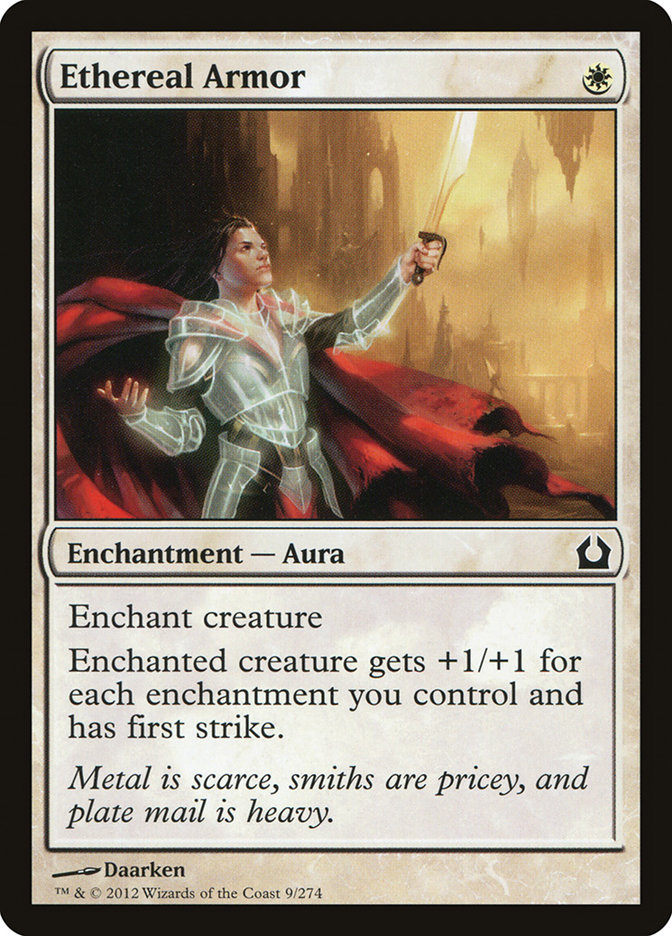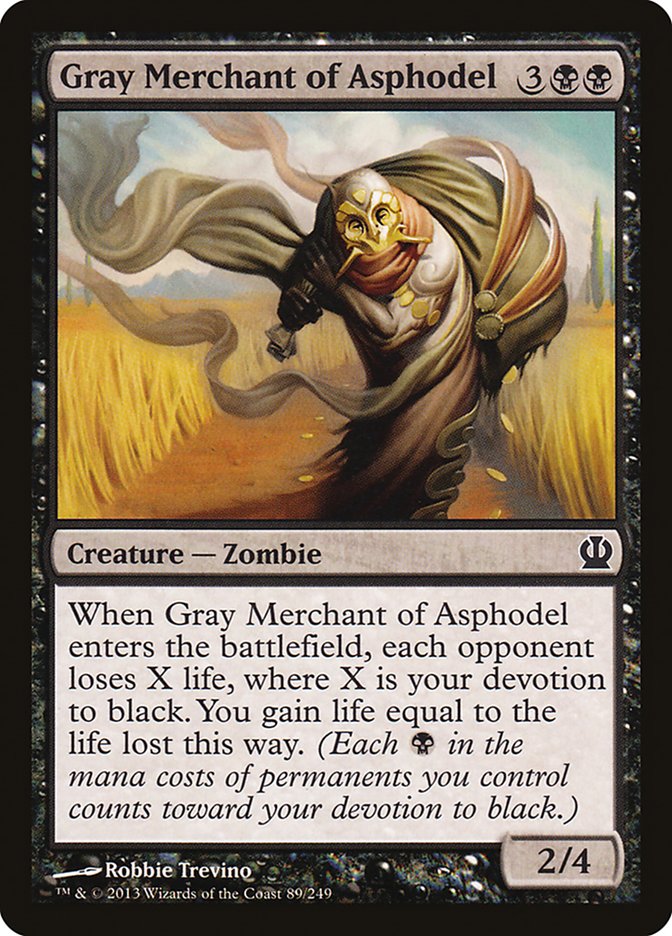Long live Pauper!
And in the case of today’s article, long live Standard Pauper!
This will mark the first (though probably not the last) of my SCG articles centered on the Standard Pauper format. Not currently sanctioned by Wizards, Standard Pauper has nevertheless received a heightened degree of recognition over the past year. Like Pauper proper, the format is comprised of commons only. The catch here is that Standard Pauper requires cards to be currently printed at common in a Standard-legal set (this means something like Doom Blade, while previously printed as a common, is not Standard Pauper legal since its Magic 2014 printing is at uncommon).
Here are a few preliminary resources for Standard Pauper:
A (Brief) Introduction to Standard Pauper
New Player Primer 2014
10 Reasons to Play Standard Pauper
My Thoughts On The Format
I go back and forth with Standard Pauper, namely because it’s at its best during summer when the largest card pool available (both core sets and two full blocks’ worth of expansions). The smaller the card pool is, the more decks and gameplay can end up feeling very linear, inflexible, and full of one-for-ones.
Archetype representation is pretty skimpy at points, with the closest thing to combo over the past few seasons being Ghostly Flicker plus Archaeomancer and friends. It’s just very difficult to design something that isn’t vanilla considering what we have to work with. This is still enjoyable, but I advise at least knowing what to expect from the format ahead of time.
Overall I like Standard Pauper, and I should probably play it more often than I do. I also enjoy studying the difference in dynamics between Standard and Classic, as learning about one format can inform how we approach the other.
Here are a few things I think you should keep in mind when preparing to play in the Standard Pauper arena.
Standard Pauper Guidelines
#1: The Format is Defined By A Few Key Powerhouses
This has been true for as long as I’ve followed Standard Pauper since there is a big difference in most contemporary sets between Limited fodder commons and a clear Constructed-worthy design. A good thing to remember here is that playable in Classic Pauper equals super playable in Standard Pauper.
The most powerful things you can currently do in the format involve playing one of these cards:
And that’s pretty much it. Yes, there are other options, but these two are just so good. Both are institutional in Classic Pauper and have seen play in Standard (with Ethereal Armor even making it into the Modern format). What this equates to is an environment with two dominant decks: Mono-White Bestowic (see what I did there?) and Mono-Black Devotion. Peripherally there are multicolor hexproof, midrange, and control decks, but I feel like their clunky mana bases and lack of streamline put them a step or two behind.
I’m going to go into specific decklists (including a brew of my own) in just a bit. Until then, let’s look at our next guideline!
#2: Being Reactive Generally Sucks
This has a bit of a caveat. You can be reactive in the early stages of a contest if you have something powerful to close out the game with later (Gray Merchant of Asphodel comes to mind). I often make the mistake of forgetting this guideline. Case in point:
Old Me: "In a world of small creatures and one-for-one exchanges, four copies of Archaeomancer and four copies of Divination is probably the best thing! I’ll just play a bunch of removal and countermagic, draw more cards than my opponent, and win with . . . something."
That’s not to say that playing Archaeomancer Control can’t get there, but what you’ll generally find is that Standard Pauper control decks are missing a few critical tools that would normally help them excel. Color fixing is the first of these, although the Guildgates and Prophetic Prism go a long way if you’re conservative enough with your color distribution.
Sweepers are next, with Electrickery being pretty much the best option. In my eyes, this is a very big deal. Trading one for one only works until they resolve one more threat than we have answers for. I find that this comes up more often than one might think. Lastly, control is missing its typically awesome forms of inevitability like planeswalkers and Sphinx’s Revelation.
It’s really a shame since Nullify seems like such a sweet foil to both Ethereal Armor and Gray Merchant of Asphodel. Similar, Last Breath can kill a soon to be enchanted dude as well as the Theros devotion Zombie. There’s also Pacifism and Celestial Flare for already enchanted monsters, Keening Apparition and Revoke Existence for bestow creatures, and on top of that . . . pretty much no tier 1 win conditions.
Nephalia Seakite and Dawnstrike Paladin have reasonable Standard Pauper stats, but considering that many opponents are playing removal-dense lists, those stats might not even matter. In spite of all this, the control mage wannabe in me has still cooked up an Azorius deck, which I’ll be going over toward the end of this article.
#3: Limited Tricks Are Way Playable
With so much creature-on-creature pileup, the format can at times feel like Limited, albeit with more consistency and zero bombs. This leaves decks to rely on tricks and moderate trumps in order to break through stalls or to break races wide open. A well-timed Fortify or Rootborn Defenses can be quite savage since a lot of games are relatively close and many cards across the format are analogous in terms of power level.
Please keep in mind that I am by no means an expert on Standard Pauper and much of the time I merely observe the format from a distance. If you disagree with my notions regarding the Standard Pauper status quo, let me and other readers know!
From here I’d like to more closely discuss two of the best things you can be doing in Standard Pauper. The first?
Build A Baneslayer
Creatures (26)
- 4 Auramancer
- 3 Keening Apparition
- 4 Syndic of Tithes
- 3 Wingsteed Rider
- 4 Hopeful Eidolon
- 4 Nyxborn Shieldmate
- 4 Akroan Skyguard
Lands (20)
- 20 Plains
Spells (14)
Sideboard

Here are some draws that seem pretty good in this format, at least in a vacuum.
Turn 1: Hopeful Eidolon.
Turn 2: Enchant with Ethereal Armor, swing with 3/3 lifelink.
Turn 3: Enchant with Nyxborn Shieldmate, swing with 5/6 lifelink.
Or:
Turn 2: Akroan Skyguard.
Turn 3: Enchant with Nyxborn Shieldmate, swing with 3/4 flying.
Turn 4: Enchant with Ethereal Armor, swing with 6/7 flying.
Going in on these kind of plays is actually reasonable considering we have three ways to mitigate a typical blowout. The first is via Gods Willing, which not only adds +1/+1 counters to Akroan Skyguard and Wingsteed Rider but also lets us scry. Next we have the bestow cards. These stay on the board as creatures if our initial Baneslayer dies, gets bounced, or gets exiled. Lastly, we have the full set of Auramancer to start up the bestow train all over again.
Hopeful Eidolon and Syndic of Tithes can shine in race situations, which are prevalent in games of Standard Pauper. There is a bit of redundancy between Celestial Flare and Smite, though Flare accounts for hexproof assailants and beefy blockers. While I’m not in love with the split, I’m also not really opposed to it.
There’s a reason that many players are advocating white as a high priority in Born of the Gods-Theros-Theros Draft these days. I imagine much of that philosophy transfers over to Standard Pauper and is only compounded by the heavyweight Ethereal Armor out of Return to Ravnica.
Play The Drain Game
Keep in mind that the tournament won by this list occurred just before Born of the Godsbecame available online, though I don’t think that changes much. Marshmist Titan is one of the primary Born of the Gods considerations for this deck, backed up by not much else. Frankly Titan doesn’t excite me since a high devotion count for us already implies that we’re doing well; a vanilla 4/5 for anything above four mana is not something I’d be happy about paying even in Standard Pauper.
The game plan here is pretty effective: remove early threats on a one-for-one basis, utilize extort via Basilica Screecher and Gray Merchant of Asphodel to stabilize, proactively remove any future problems with Disciple of Phenax, and get up on cards and selection thanks to Read the Bones and Corpse Hauler. From there we use those same Screechers and Merchants to close out the game.
Trumping a Gray Merchant of Asphodel is hard enough in Classic Pauper, so you can probably picture how formidable the card is here. One trusted means of fighting it off is with countermagic, which I’ve incorporated into a very theoretical Azorius deck. Have a look!
Try Something New
Creatures (16)
Lands (24)
Spells (20)
Sideboard

I can’t quite call this U/W Control since it doesn’t have many ways to draw cards. Stealer of Secrets is the primary avenue, though I wouldn’t advise going for broke just to force it in for damage. More aggressive decks will likely have to respect its presence on the table, buying us time in a pinch.
Fate Foretold is the second avenue, working best of course with Keening Apparition. I feel like enchantment hate and removal makes Azorius a superior color combination to Dimir or Izzet.
This deck should be capable of racing thanks to its bevy of Seakite, four-damage Frostburn Weird, and the two (possibly useful?) Riot Control. Though Last Breath isn’t the most optimal racing implement, it can be pointed at one of our own guys if needed. I’m a little wary of the ten white mana sources, but I felt like Frostburn Weird and Nullify require a strong bias toward blue.
Heavy sideboarding is not recommended, hence the prevalence of two-ofs in our board. I think Razortip Whip makes a decent swap-out plan against Mono-Black Control since we’ll be hard pressed to outlast their creature removal. They also have no way to get rid of resolved artifacts, and we can counter or remove all of their Gray Merchant of Asphodels (in theory anyway; I suppose Corpse Hauler makes this approach more difficult).
Additionally, while many of the sideboard cards have applications against White Weenie, our maindeck has already been constructed with it in mind, so there isn’t very much wiggle room.
What are your thoughts on the deck? Did I overlook any appropriate cards?
Before I go, I want to list some Azorius synergies that I think should get better before the format rotates. Here goes!
- Deputy of Acquittals and Keymaster Rogue + Archaeomancer, Auramancer, Azorius Arrester, Mnemonic Wall, Omenspeaker (also decent at continually evolving Cloudfin Raptor)
- Breaching Hippocamp + Oreskos Sun Guide and Sphinx’s Disciple
- Floodtide Serpent + Divine Favor, Fate Foretold, Knightly Valor, etc.
Your Turn
I’d really like to hear your thoughts on the Standard Pauper format. What experiences have you had and what are you looking forward to? Would you like more coverage of Standard Pauper in the future?
I hope you enjoyed the article. The floor is yours!


